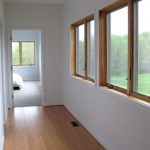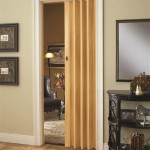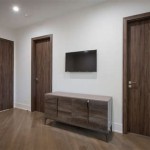Essential Aspects of Sound Deadening Interior Walls
Soundproofing interior walls is crucial for creating a peaceful and comfortable living space. When noise levels become excessive, it can disrupt sleep, hinder productivity, and affect overall well-being. By implementing effective sound deadening techniques, homeowners can achieve a quieter and more serene indoor environment.
1. Identifying Noise Sources
The first step in soundproofing is identifying the source of the noise. Common sources include neighboring rooms, outside traffic, and mechanical systems. Once the sources are known, targeted measures can be taken to address each one effectively.
2. Mass-Loaded Vinyl (MLV)
MLV is a heavy, flexible material that is highly effective in blocking sound transmission. It is typically installed between layers of drywall or on the backside of walls to add mass and absorb vibrations. MLV can significantly reduce noise levels in both low and high frequencies.
3. Green Glue Compound
Green Glue is a viscoelastic damping compound that is applied between layers of drywall. It creates an acoustic barrier that effectively reduces the transmission of sound waves by absorbing and dissipating energy. Green Glue is particularly effective in blocking mid-range frequencies.
4. Acoustic Caulking
Acoustic caulking is a flexible sealant that is used to fill gaps and cracks around windows, doors, and other openings. It helps to prevent sound from leaking through these areas and improves the overall soundproofing performance of the wall.
5. Acoustic Panels
Acoustic panels are decorative panels made from sound-absorbing materials such as fiberglass, foam, or fabric. They can be installed on walls or ceilings to absorb and redirect sound waves, creating a more acoustically balanced space. Acoustic panels are particularly effective in reducing reverberation and echo.
6. Decoupling
Decoupling is a technique that involves separating two surfaces to reduce the transmission of sound vibrations. It can be achieved by using resilient channels or sound isolation clips between studs and drywall. Decoupling helps to prevent sound from traveling through solid connections.
7. Professional Installation
It is important to have sound deadening systems installed properly by a qualified contractor. Improper installation can compromise the effectiveness of the materials and potentially create additional noise problems. A professional installer will ensure that all components are properly secured and that the wall system is airtight.
Conclusion
By understanding the essential aspects of sound deadening interior walls and implementing effective techniques, homeowners can create a more peaceful and tranquil living space. By addressing noise sources, using sound-absorbing materials, and ensuring proper installation, they can reduce noise levels, improve sleep quality, and enhance overall well-being.

How To Soundproof Interior Walls Made Of Drywall Ecohome

Wall Soundproofing How To Soundproof Your Netwell

Wall Soundproofing How To Soundproof Your Netwell

How To Soundproof A Wall Materials For Soundproofing Walls

How To Soundproof A Wall Achieve Higher Stcs On Your Demising

Is Soundproof Insulation Worth The Cost

Wall Soundproofing How To Soundproof Your Netwell

How To Soundproof A Stud Wall Noisestop Soundproofing Guide

Soundproof A Wall Best Level 3 Soundproofing Company

What Are The Four Elements Of Soundproofing








